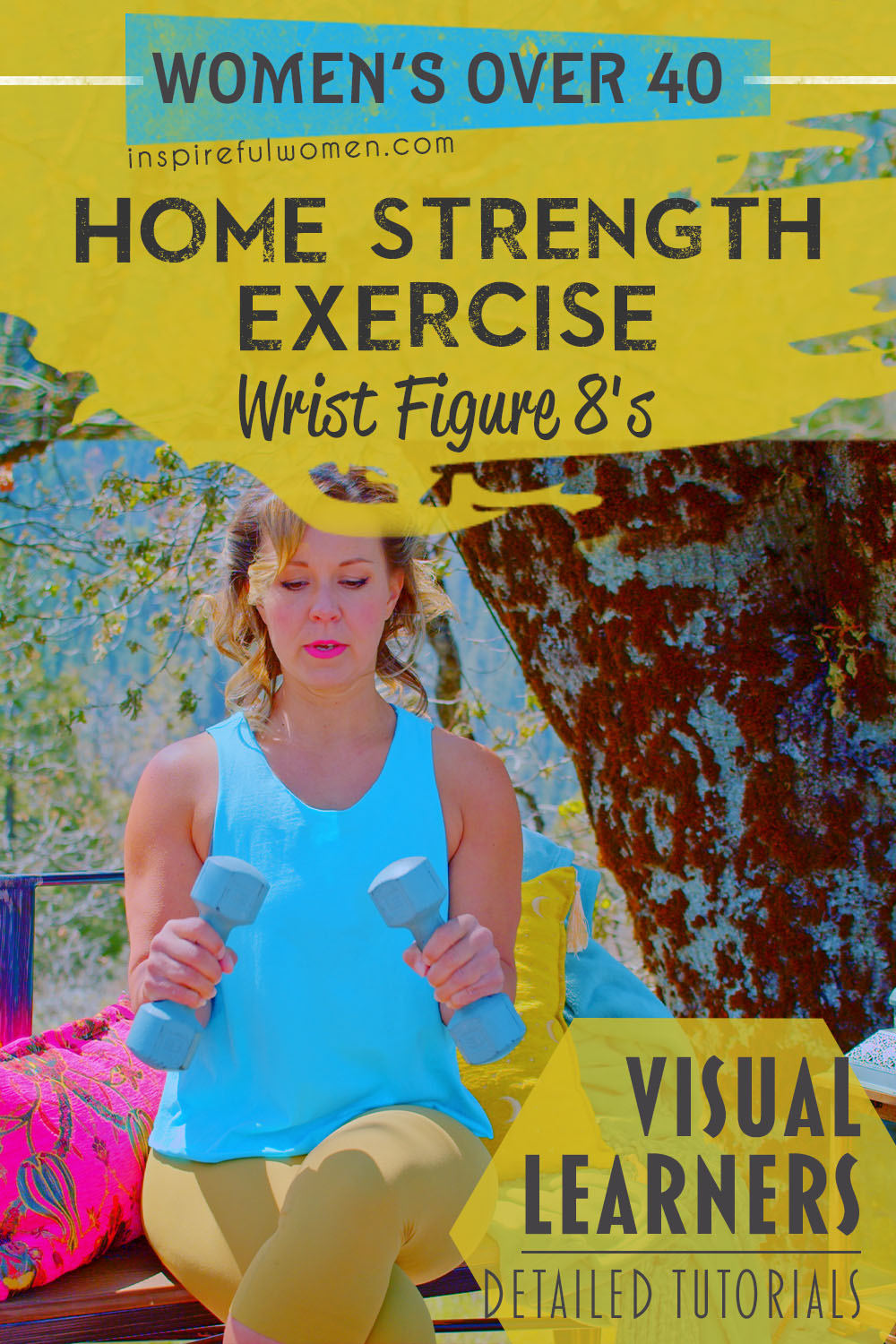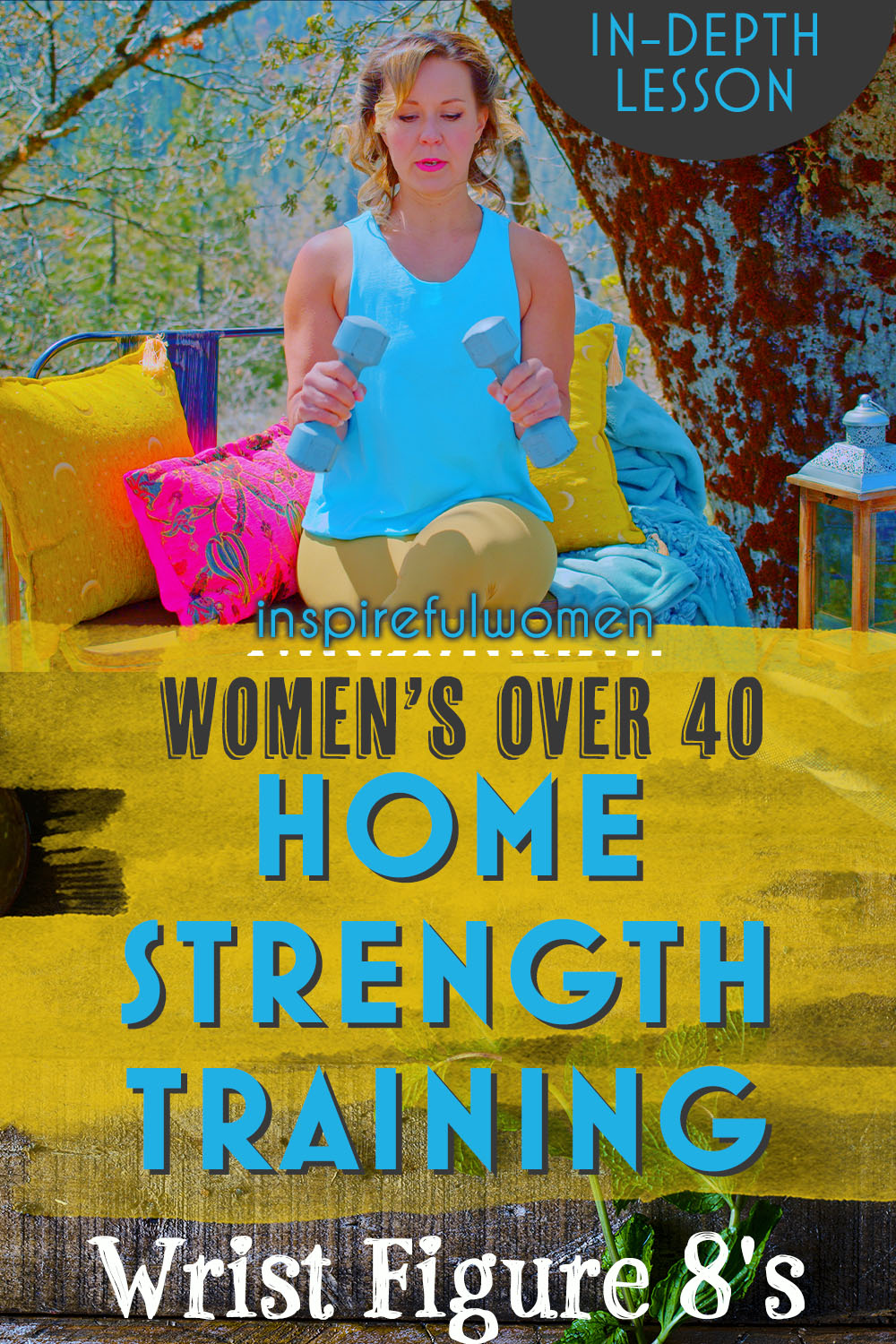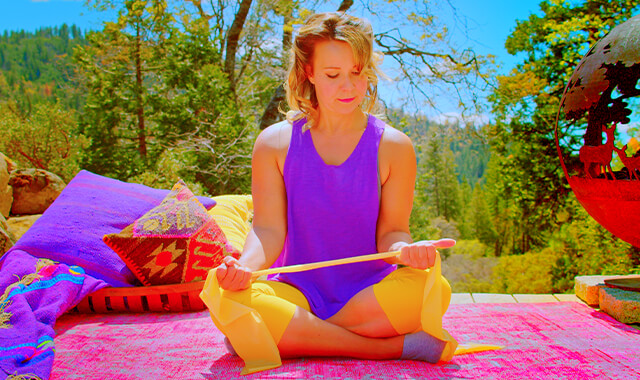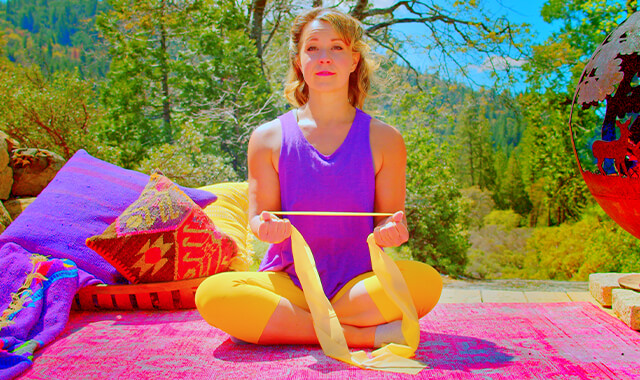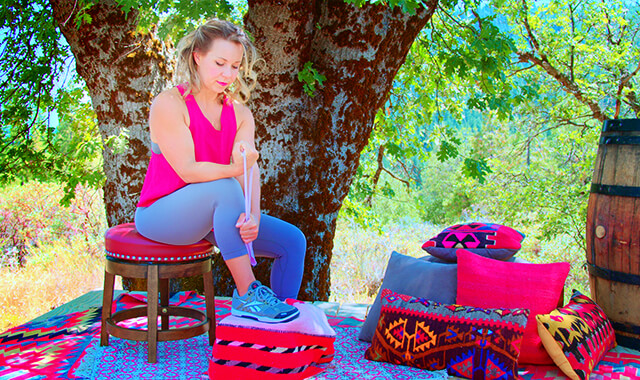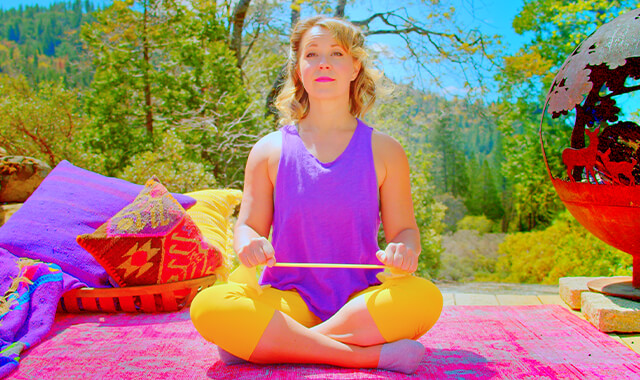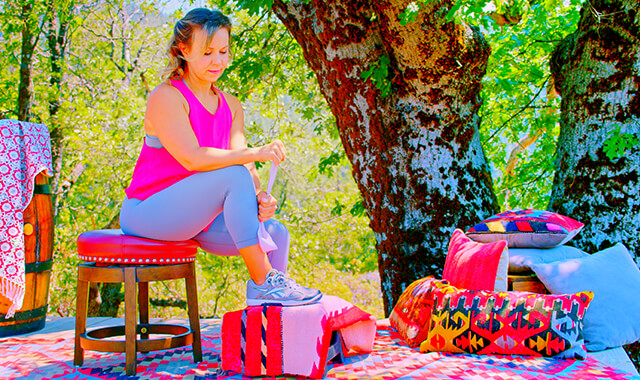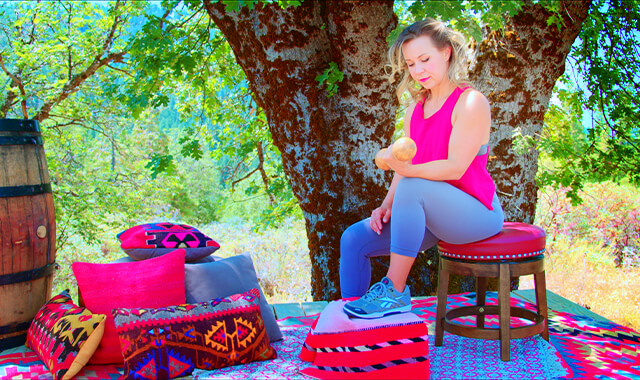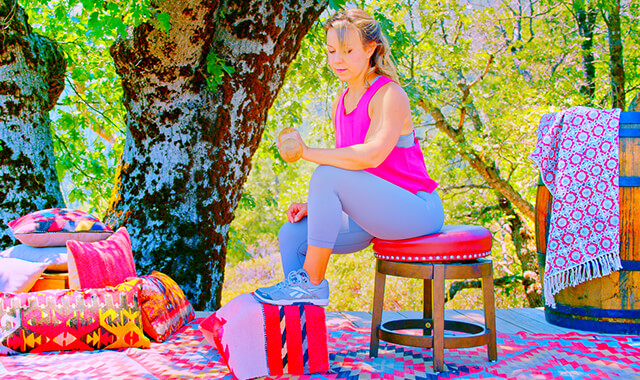Dumbbell Wrist Figure 8's
How to Do Dumbbell Wrist Figure 8's - Beginner Lower Arm Exercise | In-Depth Guide [VISUAL LEARNERS] Beginner
Proper Form & Common Mistakes | Home Resistance Training
WHAT DO YOU WANT TO SEE?
QUICK DEMO
QUICK DEMO
MUSCLES THIS WORKS
MUSCLES
MAIN MUSCLES WORKED IN the Dumbbell Wrist Figure 8
FOREARM MUSCLES - SEE BELOW
Biceps brachii, supinator, pronator teres, pronator quadratus, flexor carpi radialis, flexor carpi ulnaris, extensor carpi radialis longus and brevis, and extensor carpi ulnaris.
OTHER MUSCLES WORKED:
- Anterior deltoid
- Scapular stabilizers
- Flexor digitorum profundus
- Superficialis
- Palmar interossei
- Flexor digiti minimi brevis
- Abductor pollicis longus
- Extensor pollicis longus
- Brevis
- Palmaris longus
STARTING POINTERS
Starting Pointers
WHAT WE'RE DOING TODAY
ALL WE'RE DOING:
Flipping our hands up and down, trying to make a figure 8 shape with the dumbbell.
The Dumbbell Wrist Figure 8 exercise is an easy and effective way to enhance wrist strength, mobility, and coordination. It targets your wrist muscles, which are often overlooked but play a crucial role in various everyday activities. This will improve our grip strength, wrist stability, and overall wrist dexterity.
Many of the muscles that cross the wrist will be working together in a coordinated pattern to control the movement. Following the hand with the eyes helps to improve your control over the movement - and helps to strengthen the communication between the muscles and the brain. The forearm may try to help out, that is ok, just try to focus on moving the wrist as much as possible.
Per Carol: The top of the hand will not stay parallel to the ground because it is moving in combinations of wrist flexion/ulnar and radial deviation and extension - so the top will definitely be tilting. So the top of the hand does not stay level but the top of the forearm does. This is a little movement and should be done without weights first. You are right, you have some limited motion in your right wrist.
I tried it holding the end of my forearm (right at the wrist) and fingers still and thinking about drawing a figure 8.
Go slow and concentrate on getting nice smooth circles (each side of the 8). It is a really good one for coordination and wrist mobility.
HOW TO DO THE EXERCISE
LOOKS
HOW Dumbbell Wrist Figure 8's SHAPE OUR BODY
Toned forearms, creates balance between the size of the upper arm and forearm.
PROPER FORM
PROPER FORM: Dumbbell Wrist Figure 8
EQUIPMENT, SETS & REPS
EQUIPMENT
Highlighter, small paint roller, dumbbell, can, small weighted ball.
SUGGESTED STARTING WEIGHT FOR WOMEN:
0 - 1 lb.
SETS & REPS:
1 set of 8 - 10 reps, reverse direction for the 2nd set of 8 -10 reps.
PACE:
Slow control.
BODY POSITION
BODY POSITION FOR THE Dumbbell Wrist Figure 8
STANCE: Standing with a neutral spine, knees slightly bent. Shoulder blades back and down, sternum lifted.
ARM: Upper arms down by the sides of your torso.
WORKING ARM: Elbow bent with forearm parallel to the floor.
GRIP: Neutral grip - thumbs pointing up.
HOW TO DO
HOW TO DO Dumbbell Wrist Figure 8's
CUE: Try to move very smoothly and with control in a figure 8 movement.
You will be leading the movement with your thumb to draw the top half of the 8 and your little finger to draw the bottom of the eight.
Your wrist bends up to your thumb side to begin the top of the 8. Your wrist continues to bend up and also bends back into an extension to complete the top of the 8.
Your wrist will flex and bend to the side of your little finger as your little finger leads the way to draw the bottom half of the eight.
After completing 8 - 10 reps, reverse the direction to begin leading with your little finger.

WHAT WE'RE DOING TODAY
WHAT & WHY
BENEFITS OF TRAINING THE Wrist muscles
WHAT
WHAT WE'RE DOING TODAY
Our wrists will be bending a lot in this exercise. This is the main point of the wrist figure 8’s.
In this exercise, the wrist is used to move the hand in a figure 8 shape. This movement takes the wrist through the continuous motion of the entire range of rotation. The muscles move the hand through bending down, side bending, bending up, and side bending to the other side. The focus is on good smooth control of the movement. This exercise can be used to warm up the wrist before arm exercises, it can be used in between sets, or it can be done at the end of a workout. This is also a nice exercise to do when sitting at your desk or driving - it will increase the blood flow to the muscles, and loosen up stiffness in the joints and tightness in the muscles.
It is helpful to start by just holding something like a highlighter or pen so that you can visualize figure 8 as you move the wrist.
WHY BOTHER DOING IT?
WHY
WHY DO WE EVEN CARE?
FIX THE LIMITING FACTOR IN MANY ACTIVITIES
If you think about it, our hands, wrists, forearms - they are really like, “the thing” when it comes to doing a lot of activities in life and one of our MAIN limiting factors to these activities as well.
The rest of our arms, core & legs could be bulging with muscles, but without healthy pain-free movement of our wrists, hands, and fingers - we’re going to have a hard go doing a lot of things.
Gardening, driving, hiking downhill with trekking poles, opening cans, and jars, chopping recipe ingredients, sewing, painting, dishes, putting on clothes - whether hobby or chore, whatever, all these things need pain-free movements of our hands and wrists and grip strength.
As we age our ability to use our hands decreases - not only do the muscles get weaker, but the joints of the wrist and fingers lose mobility and we lose motor control - our ability to use our hands for detailed movements. Grip strength at 45 years of age has been found to be a strong predictor for what we will be like physically 25 years later.
MAINTAIN WRIST/FOREARM HEALTH TO KEEP THE REST OF YOU ACTIVE
To me, this probably has something to do with the fact that if we maintain or improve our ability to continue using our hands & wrists for all the activities they are involved in as we age, we’ll keep using the rest of our bodies for the same activities as well obviously, which means - we’ll stay young & active much longer!
Think about it - if it hurts to put pressure on your wrist to support you when you hike downhill with trekking poles, or when you are gardening- the natural response for many of us is to do those things less & less & eventually to…stop entirely. Those are 2 very active things that involve our whole body moving that now is no longer a part of our life & we may not just be sitting instead. This lack of movement will cause us to age much faster.
So keeping these smaller parts of us capable (or improving them - it’s never too late! If you already have painful or restricted movement in your wrists & hands, these types of exercise can really improve that!) is what will keep the rest of our bodies capable as well as the years go by, since we’ll be continuing to engage in all these activities that utilize our whole body.
All that to say - these wrist & forearm exercises are a great way to increase the mobility, control & lubrication of these joints.
EVERYDAY LIFE
EVERYDAY LIFE &
MUSCLE FUNCTION
HOW WE USE OUR FOREARM MUSCLES IN EVERYDAY LIFE
1. THE MUSCLES OF THE FOREARM WORK TOGETHER TO STABILIZE THE WRIST DURING ALL ACTIVITIES THAT INVOLVE USING THE ARM WHILE HOLDING THE WRIST STILL:
- Lifting
- Carrying
- Drinking - holding a glass
- Shoveling
- Raking
- Weeding
2. THE MUSCLES OF THE FOREARM WORK TOGETHER TO MOVE THE WRIST DURING ALL ACTIVITIES THAT INVOLVE USING THE HAND:
- Brushing teeth or hair
- Washing the dishes
- Using a computer
- Writing
- Buttoning a button
- Waving
- Picking small items up
- Eating
- Folding laundry
- Using a screwdriver
- Opening a jar
- Using a can opener
- Turning a door knob
SCIENCY STUFF
ALLLL MUSCLES & WHEN
ALL MUSCLES WORKING & WHEN DURING THE Dumbbell Wrist Figure 8
The muscles of the hand that work to hold the dumbbell: flexor digitorum profundus and superficials, palmar interossei, and flexor digiti minimi brevis.
This is a rough approximation, the exact muscles that are working to complete each part of the movement will be very dependent on a range of motion and the amount of weight used. Flexor carpi radialis, adductor pollicis longus extensor pollicis longus and brevis move the wrist into flexion and radial deviation. The extensor carpi ulnaris will pull the little finger side of the hand over and up to switch to the other side of the eight. The extensor carpi radialis longus and brevis and extensor carpi move the wrist to complete the eight.
PIN IT FOR LATER!
